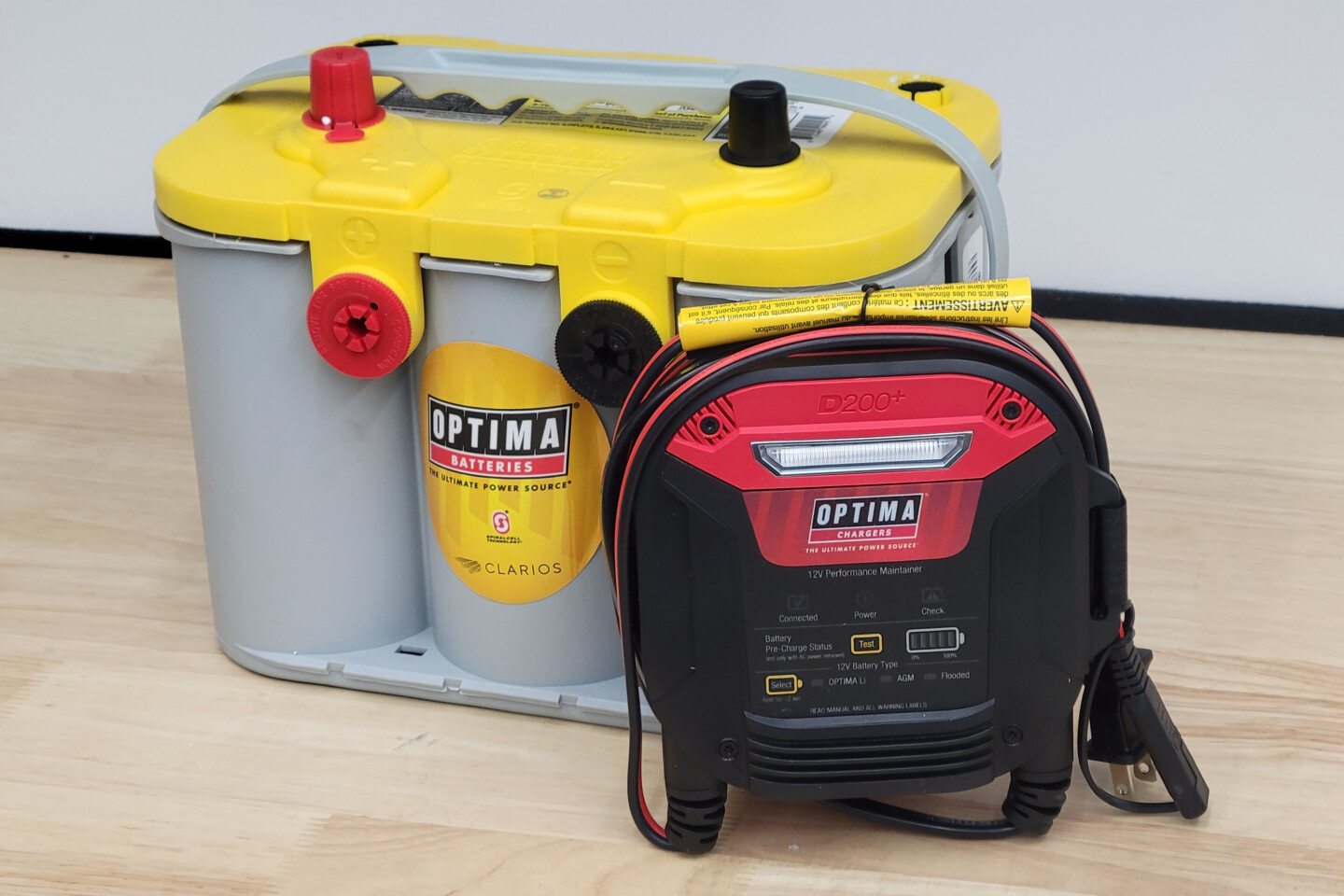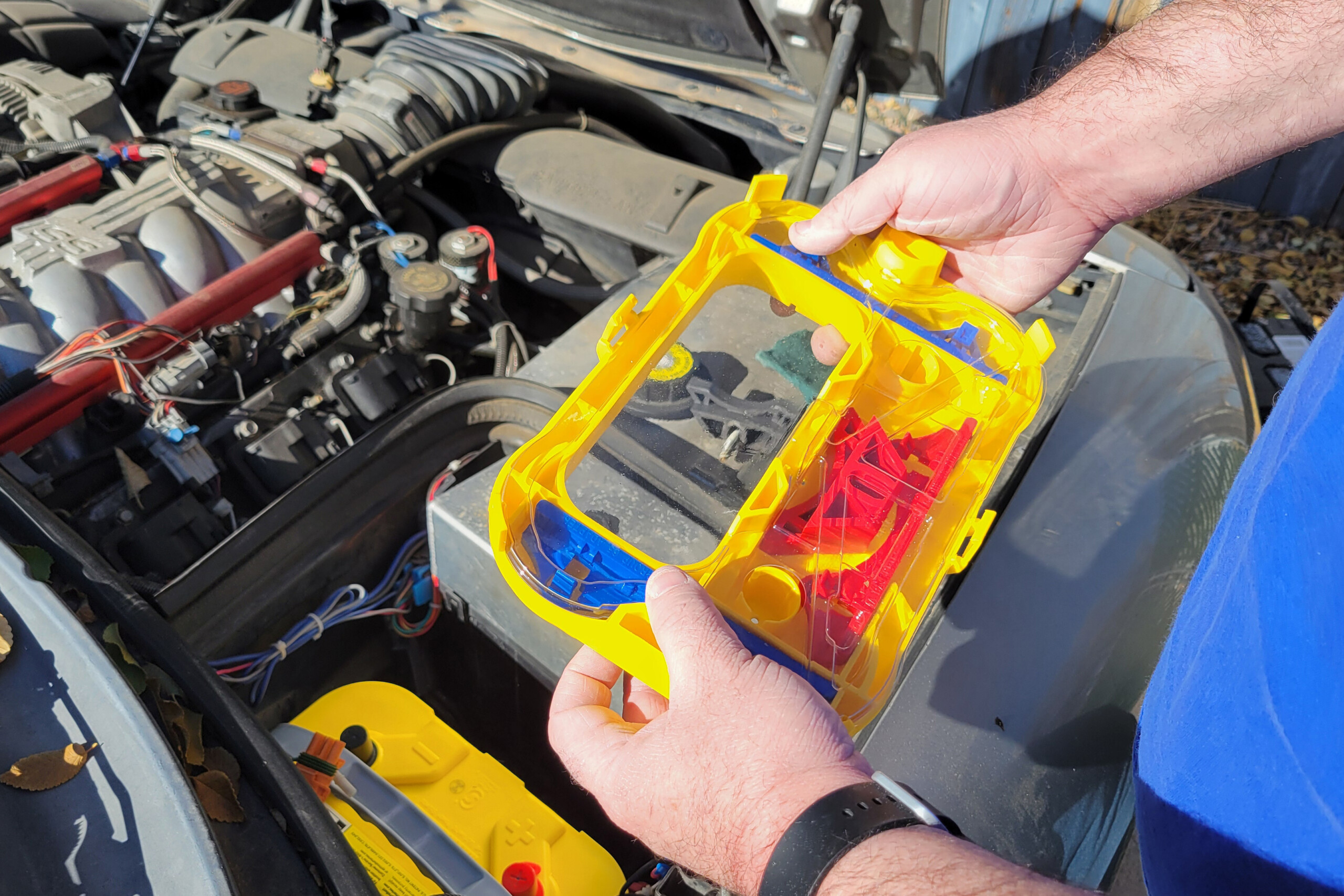When it comes to cool performance parts, no one ever thinks of batteries. In fact, most people only think about batteries when they are having issues. That’s not really fair, because the amount of research and development that someone like Optima Batteries puts into making their batteries deserves recognition, even though the better the batteries they produce, the less anyone thinks about them because they just flat-out work.
Project Honey Badger has been parked for six years. Not only is the battery it was parked with long since expired, the replacement battery that was sourced and installed several years back is kaput as well. Letting a battery sit unused will do that, especially when you factor in the mystery parasitic draw that we’re going to have to track down in the future. So, we made the call to our friends over at Optima to help us sort out the battery side of the situation.
Sealed Cells And Deep-Cycle Power
We’ve used Optima batteries in several of our previous project cars, and one of the key features of them is that they are sealed-cell batteries. That means that, unlike traditional lead-acid automotive batteries, there is no potential for off-gassing or internal contamination. The former was a larger deal in our previous projects, where the battery had been relocated to the passenger compartment (hatchback and unsealed rear bulkhead applications). Even though the technical regulations for the sanctions required a vent tube in those situations, we didn’t really need it thanks to Optima’s sealed design.
In this application, however, we are keeping the battery under the hood. And as such it’s exposed to the elements. So knowing it’s sealed provides peace of mind that nothing is going to find its way into the battery. Additionally, the absorbent glass mat (AGM) cell design is spill-proof and leak-proof, because it keeps the electrolyte solution in a gel suspension. This is super-important in our C5 Corvette application, since the battery sits directly atop the ECM, and a leaky battery can spell an expensive electrical fix.

Look at the specs on our YELLOWTOP battery. By comparison (to the one we’re replacing) we have 150 more cold cranking amps, 120 more cranking amps, and almost double the reserve capacity.
There’s also some electrical performance benefits to the AGM design, The increased contact between the battery’s plates and the electrolyte results in lower internal electrical resistance. That means more efficient movement of electrons and more efficient charging and discharging. The long and short of that means more starting power in the same-sized batteries, faster recharging, and more overall energy capacity for power-hungry electronics.
Red, Orange, and Yellow – Oh My!
If you are at-all familiar with the Optima brand, you know that they categorize their batteries using a color code. The REDTOP is the “standard” Optima battery, designed for maximum starting power output. Then you have the YELLOWTOP, which combines that starting power with much-improved deep-cycling capabilities (more on that in a minute). Then, there is the ORANGETOP battery, which is Optima’s lithium battery option, and really requires its own discussion.
We spoke with Optima’s Jim McIlvaine about our needs, since we have traditionally used REDTOPs in the past and wanted verification that it was the right route to take. We’re lucky we did, because he steered us to the YELLOWTOP for our use case. “Since this is going to be a weekend car for you, and you’ll likely not drive it much in the winter, I’d recommend going with the YELLOWTOP D34/78,” McIlvaine says. “All of the options have plenty of cranking amps for engine starting, but the YELLOWTOPs can handle deep discharges better than REDTOPs and the D34/78 is the largest battery option.”

Even being the largest battery in Optima’s lineup, the D34/78 fit perfectly into the OE battery tray on our C5.
Now, anyone who is familiar with the C5 (as we are slowly becoming) knows that mysterious electrical draws can be the bain of a C5 owner’s existence, especially for a car not driven every day and, let’s be honest here, even our “daily driver” doesn’t get driven more than once or twice a week at best. So not only will the YELLOWTOP’s deep-cycle capability help buy us a little more time between starts, but also it will shrug off the deep draw-downs between weekends, since that’s exactly what a “deep-cycle” battery is designed to do.
Optima batteries excel at power output and storage thanks to several of their key design elements, like the “SPIRALCELL” technology, which, as the name suggests, uses a pair of continuous plates, manufactured from 99.99-percent pure lead wound into a spiral for each of its battery cells. There are also a lot of other tech features that people really into electricity will appreciate, but we prefer to leave the angry pixies in the battery and just trust them to work like the engineers say they will.
In order to accomidate multiple fittments, Optima has a number of mounting accessories (left) included with the battery. The only accessory we needed was the hold down that bolts into the factory spot using the factory bolt, but has a scallop for the rounded profile of the Optima (right).
Charging and Maintaining
Since we are currently fighting the curse of the hidden parasitic draw, and because winter is coming (who am I kidding, it’s here already for us), McIlvaine also suggested one of Optima’s battery maintainers. One thing you need to be very aware of with an AGM battery, is that your charger, regardless of the name on it, needs to be AGM-compatible. AGM-compatible battery chargers are much more common these days, but still, it’s something you should have in your head.
“For a maintainer, I’d recommend the Optima Batteries Digital 200+, just because it is physically smaller and will be easier to tuck under the hood during storage. Just don’t forget it’s there!” he quips. However, it is a valid point, as the Digital 200+ maintainer can be wall-mounted in your garage, but is also small enough to tuck under the hood.
Its compact size belies the amount of technology packed into it. It will charge standard flooded batteries, AGM batteries, and even lithium-iron 12-volt batteries. Not only will it provide up to a two-amp charge rate, it functions as an intelligent battery maintainer as well, with a whole host of automatic features to keep your battery healthy while in hibernation for winter.
On the left, you see the Digital 200+ maintainer, with it's ability to test batteries and automatically charge and maintain the battery based on it's technology (flooded, AGM, or lithium-iron). On the right are the two lead options included for whatever method is easiest for you; clamps or the more permanant ring terminals that bolt onto your battery terminals.
It comes with the traditional clamp leads, as well as ring terminal leads for a more permanent installation, and only requires a single simple connection to the leads connected to the maintainer. The ring terminals are our choice, however, we ran into a small issue with the size of the ring terminals and the bolts on the C5’s side terminals.
The quick and dirty fix would be to simply run a drill through the ring terminal to open it up some. However, one thing you might know about us, we like to overcomplicate everything. So instead, we decided to make use of the additional top posts on our D34/78 battery, and put a pair of traditional battery terminals on them, simply to screw the leads to. Overkill? Sure.
With our battery woes sorted out, now we can move on to our next electrical challenge — tracing that damned parasitic draw when the car is off. However, we are able to do so at our leisure, since the car will be getting a constant charge from the Digital 200+ maintainer, and we can unplug it and go for a drive whenever we want, without having to worry about whether the battery will be dead or not.
(Left) We took full advantage of the top posts that come on the D34/78 battery, using a set of terminals (with covers, not pictured) to attach the ring terminal leads from the Optima Digital 200+. On the right, you can see that it's wired up, set to AGM battery type and charging on shore power.

























